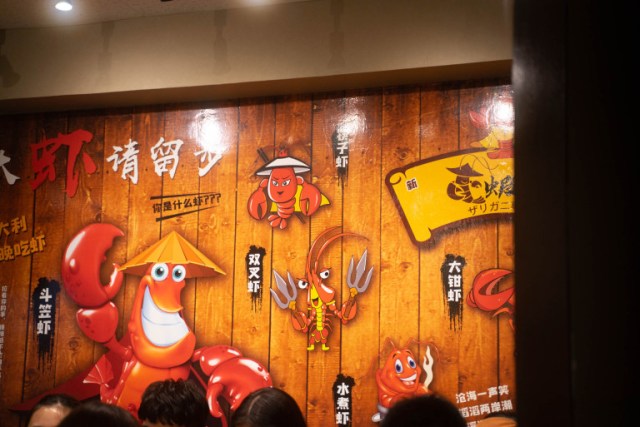
This Takadanobaba restaurant blew us away with its delicious Chinese-inspired dishes!
Crayfish aren’t really popular to eat in Japan, despite being native to the country. Still, that doesn’t mean you can’t find a good place to eat them. In fact, there is a restaurant in Tokyo exclusively dedicated serving crayfish…and since it was the best dang crawdads we’ve eaten this side of the Pacific Ocean, you better believe we’ll be back!
The restaurant is known as Ebido, and is located in the university neighborhood of Takadanobaba in Tokyo. It’s just 10 minutes straight down the road from Takadanobaba Station on the JR Yamanote line, and has a sign outside that says, “zarigani senmonten” (ザリガニ専門店), meaning “restaurant specializing in crayfish.”
We were surprised to see that many people were stopping outside to take a look at the menu. Whether that was because it’s quite a rare cuisine to specialize in, or because the pictures of the crayfish rice bowl looked delicious, we couldn’t say. A peek inside the restaurant revealed more pictures of curious crayfish dishes, like “Mala Crayfish”, “Garlic-flavored Crayfish”, and “Chinese Food Therapy Crayfish”, so we could not wait to try it.
We had booked a reservation for 5p.m., just after the restaurant opened. We arrived on time and were immediately glad that we had a reservation because the place was already packed just minutes after opening.
A waitress greeted us at the door in Chinese, then responded in perfect Japanese when we told her we had a reservation. She led us to our table in the bustling dining room, where nearly everyone else was speaking Chinese. Thankfully, the menu was also written in Japanese and all the staff could speak Japanese, so we didn’t have any trouble making our orders.
Though the menu has some items that don’t use crayfish, most of the dishes do. We decided to start with the “zarigani-don”, the crayfish rice bowl we’d seen on the sign outside, for 1,280 yen (US$12.17), but we wanted to order something else, too…for the sake of journalism, of course.
We were eyeing one of the three specialty-looking dishes, the “Mala Crayfish”, the “Garlic-flavored Crayfish”, or the ‘Five-spice Crayfish”, because, as it turns out, you can order these dishes with crayfish with their heads on. We were super excited because that’s a rare treat, but then the serving staff told us that you can only get the heads if you order it ahead of time. Bummer! We ended up ordering the “Five-spice Crayfish” anyway, because it was the one that was the most mysterious-looking to us.
By the way, the restaurant also sells a good selection of your standard izakaya drinks, like highballs and Asahi Super Dry beer, as well as soft drinks like oolong tea and green tea, so there is plenty to both eat and drink at this little seafood bar.
In addition to the full house, there was a continuous stream of take-out customers who appeared to have ordered ahead of time. The amount of crayfish dishes that were bussed out of the kitchen was astounding, and from what we could see, it looked like there were only a few people working in the kitchen!
Consequently that meant we had to wait a fair bit before we received our food, but we didn’t mind. We suspected that this restaurant was responsible for a major portion of the demand for crayfish in Tokyo, so of course we would have to wait. But if you plan to eat here, we recommend giving yourself about two hours to get in, get your food, and eat, and that’s with a reservation. Otherwise it might be better to call ahead and set a time to take out your meal.
We waited about thirty minutes for our first dish, the zarigani-don. At first glance, it looked a bit like “ankake shrimp”, which is a popular Chinese dish, though at a closer look the little crustaceans were definitely crayfish.
They actually tasted like shrimp, too, but when we took time to carefully savor the flavor, we noticed it did have a faint hint of fresh water. Plus, the texture was much firmer than shrimp and gave us the impression of an animal with a leaner body.
The sheer volume of crayfish was astounding! They probably made up about 80 percent of the dish. We didn’t count exactly, but we estimated that there were about 25 on our plate. There was so much of it that we began to regret ordering a second dish…but it was so good we ate it all up!
Then, after another thirty minutes, our five-spice crayfish arrived. It was beautifully presented, and with its complex mixture of spices, it looked and smelled delicious.
This dish came with crayfish that still had their shells on. Unlike shrimp shells, which are somewhat soft and can be eaten, the crayfish shells are way harder, so you can’t get away with forgetting to peel one.
Curled up, the crayfish looked like some kind of mysterious fruit, or a new variety of nut, but when we impaled it on a chopstick, we saw its true shape. They were definitely crayfish, no doubt about it!
On the underside we could see its little skinny legs sticking up. It made us understand why some people won’t eat shrimp and other shellfish “because they look like bugs”.
To eat this dish, we had to don a pair of disposable plastic gloves that came with with it and peel off the shells. Even though it was a little extra work, we could not get enough of the flavors of the “five-spice crayfish“. It was like eating barbecued shrimp, but Chinese style. With the unique flavor of the five-spice seasoning, the firmness of the crayfish meat, and the slightly briny aroma of the dish as a whole, we were pretty enthralled. The crayfish rice bowl was delicious, but this was even better.
Though the menu prices are a little high, we can vouch for the quality of the food at Ebido, and if you won’t take our word for it, consider the fact that the restaurant was full within minutes of opening, and that there was a continuous stream of takeout orders throughout our dine-in experience. When we left the restaurant, there was a line out the door, even though it was raining outside.
Since we hadn’t heard much about this restaurant from our Japanese friends, it might be mostly popular among the Chinese-speaking residents and frequenters of Takadanobaba. Though it’s known mostly as a top neighborhood for ramen, Takadanobaba is home to several Japanese language academies as well as the elite Waseda University, so there are sure to be many international students who frequent the restaurant. Why not check it out next time you’re in the area?
Restaurant Information
Ebido / 蝦道
Tokyo-to Shinjuku-ku Nishi-Waseda 3-21-2 basement level 1
東京都新宿区西早稲田3-21-2 B1F
Open 5 p.m.-11 p.m.
Photos © SoraNews24
● Want to hear about SoraNews24’s latest articles as soon as they’re published? Follow us on Facebook and Twitter!
[ Read in Japanese ]

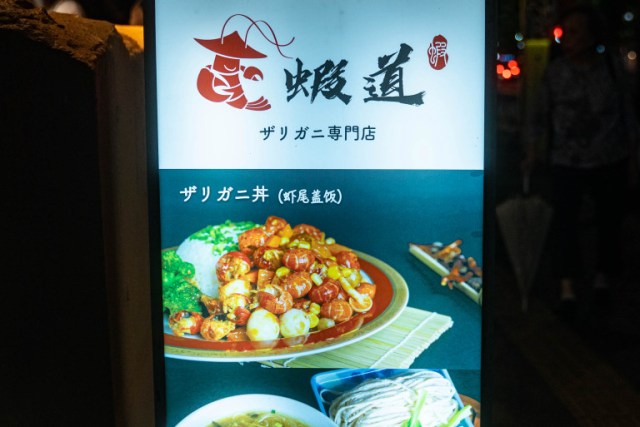
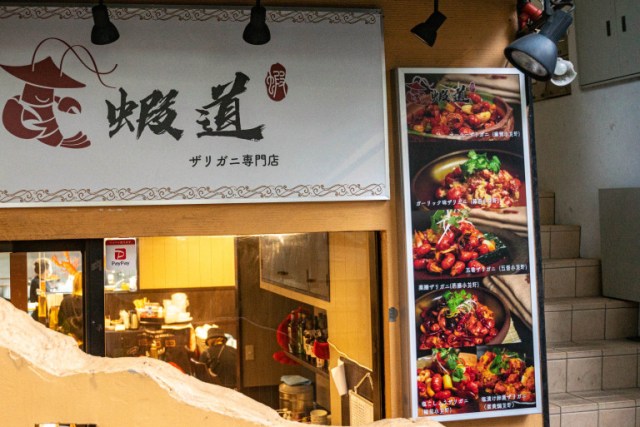
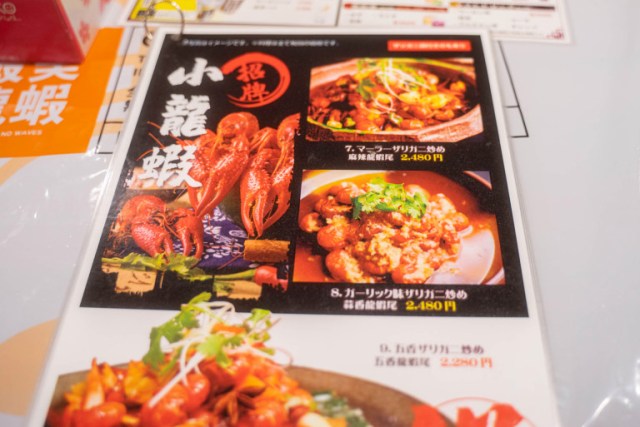
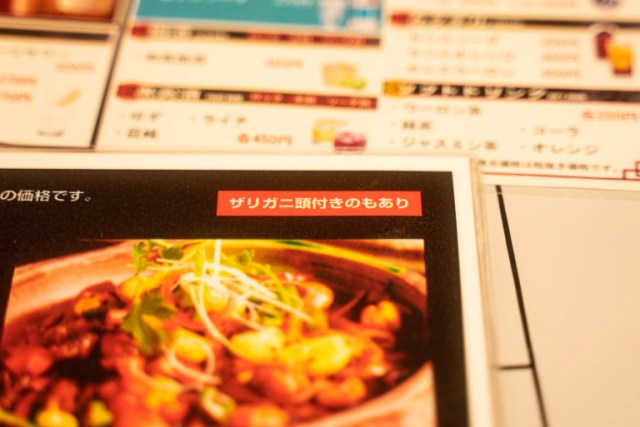
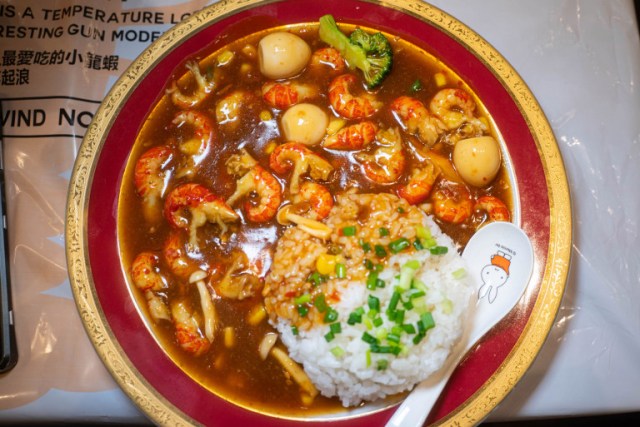
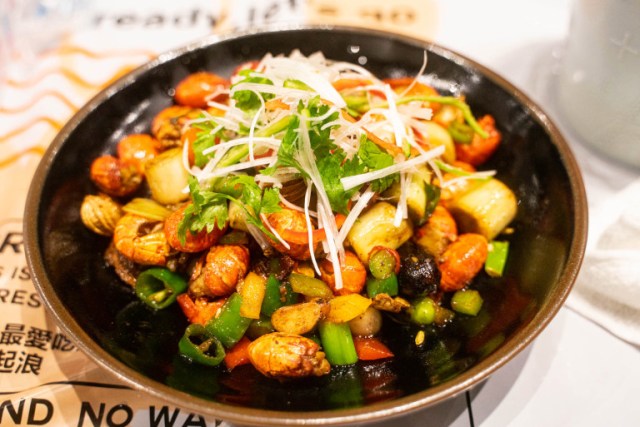
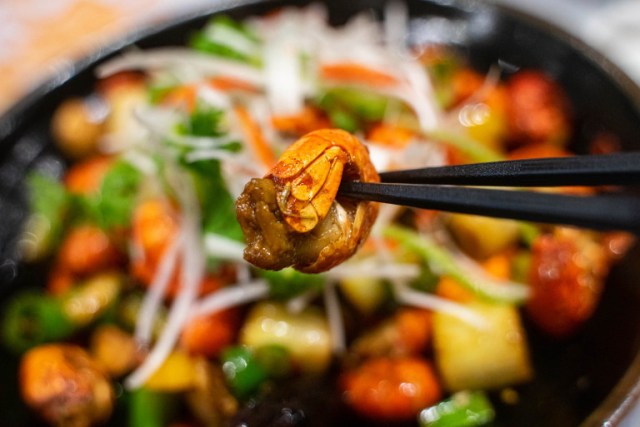
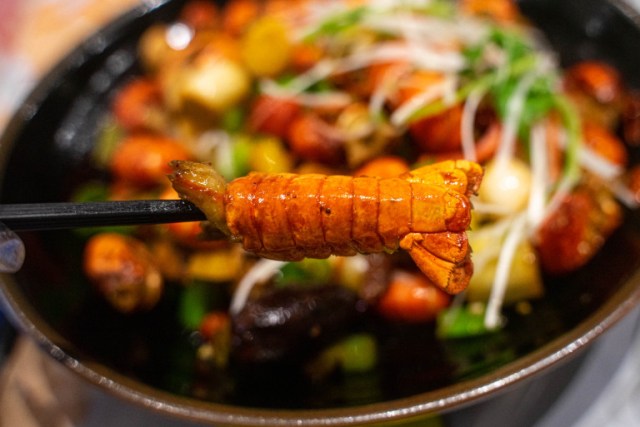
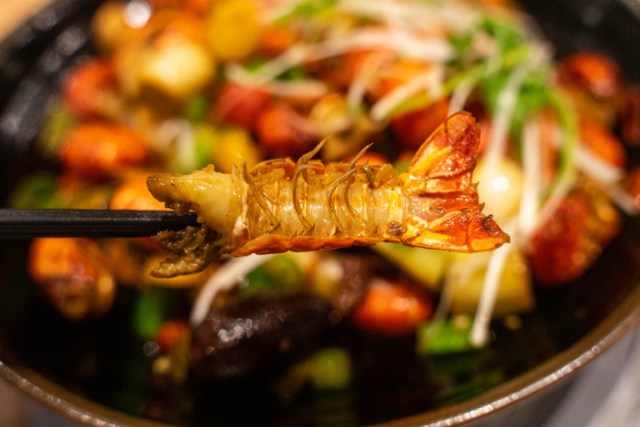
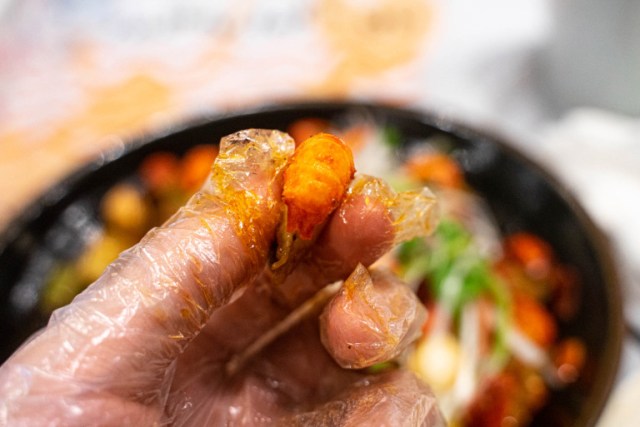
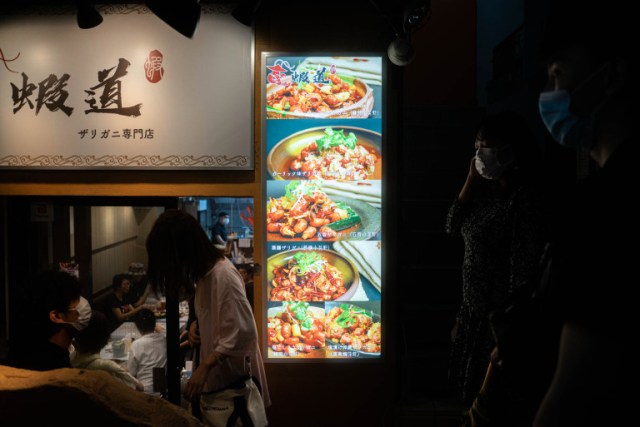
 Super-spicy Tokyo ramen served in a 572-degree Fahrenheit bowl? Yep, we’ll eat that!【Taste test】
Super-spicy Tokyo ramen served in a 572-degree Fahrenheit bowl? Yep, we’ll eat that!【Taste test】 This is the one and only kakuni pork bowl restaurant in Tokyo, and it’s amazing
This is the one and only kakuni pork bowl restaurant in Tokyo, and it’s amazing Tokyo ramen restaurant bans customers from watching YouTube videos on their phones while eating
Tokyo ramen restaurant bans customers from watching YouTube videos on their phones while eating In our search for crispy katsudon, we try a highly recommended place in a Tokyo university town
In our search for crispy katsudon, we try a highly recommended place in a Tokyo university town New tanuki soba specialty restaurant in Ikebukuro serves up soba with a unique taste and visuals
New tanuki soba specialty restaurant in Ikebukuro serves up soba with a unique taste and visuals We revisited Sweets Paradise after a decade to see if Japan’s dessert buffet still delivers
We revisited Sweets Paradise after a decade to see if Japan’s dessert buffet still delivers After being snatched up by scalpers, Sailor Moon chocolate returns in officially marked-up complete box
After being snatched up by scalpers, Sailor Moon chocolate returns in officially marked-up complete box Starbucks Japan ready to get Year of the Horse started with adorable drinkware and plushies【Pics】
Starbucks Japan ready to get Year of the Horse started with adorable drinkware and plushies【Pics】 Is Oni Koroshi sake in a drink box wino fuel or a hidden gem?
Is Oni Koroshi sake in a drink box wino fuel or a hidden gem? Japan’s human washing machines will go on sale to general public, demos to be held in Tokyo
Japan’s human washing machines will go on sale to general public, demos to be held in Tokyo Sanrio theme park in Japan announces plans to expand into a Sanrio resort
Sanrio theme park in Japan announces plans to expand into a Sanrio resort We check out the new apartment building construction site area that opened in KidZania Tokyo
We check out the new apartment building construction site area that opened in KidZania Tokyo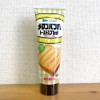 We try “Melon Bread Style Toast Spread”, designed to turn sliced bread into melon bread
We try “Melon Bread Style Toast Spread”, designed to turn sliced bread into melon bread Studio Ghibli’s new desktop Howl’s Moving Castle will take your stationery on an adventure
Studio Ghibli’s new desktop Howl’s Moving Castle will take your stationery on an adventure Japan’s cooling body wipe sheets want to help you beat the heat, but which work and which don’t?
Japan’s cooling body wipe sheets want to help you beat the heat, but which work and which don’t? Cyberpunk anime meets traditional culture in Ghost in the Shell gold leaf Japanese changing screens
Cyberpunk anime meets traditional culture in Ghost in the Shell gold leaf Japanese changing screens 7 great places to see Mt. Fuji from without having to climb it
7 great places to see Mt. Fuji from without having to climb it Hello Kitty Choco Egg figures are an adorable trip through three periods of Japanese pop culture【Pics】
Hello Kitty Choco Egg figures are an adorable trip through three periods of Japanese pop culture【Pics】 7-Eleven Japan’s ramen-cooking robot whipped us up a bowl of noodles【Taste test】
7-Eleven Japan’s ramen-cooking robot whipped us up a bowl of noodles【Taste test】 We found possibly the quietest Japanese-style hotel in Tokyo’s bustling Shinjuku district
We found possibly the quietest Japanese-style hotel in Tokyo’s bustling Shinjuku district Japan’s otoshidama tradition of giving kids money at New Year’s gets a social welfare upgrade
Japan’s otoshidama tradition of giving kids money at New Year’s gets a social welfare upgrade Sumo Sanrio! Hello Kitty and pals team up with Japan Sumo Association for new merch【Pics】
Sumo Sanrio! Hello Kitty and pals team up with Japan Sumo Association for new merch【Pics】 More Than a Capsule Stay: Why Solo Travelers Choose “global cabin Yokohama Chinatown”
More Than a Capsule Stay: Why Solo Travelers Choose “global cabin Yokohama Chinatown” Japan’s oldest largetooth sawfish in captivity back on display in Mie Prefecture
Japan’s oldest largetooth sawfish in captivity back on display in Mie Prefecture 7-Eleven Japan starts new temporary luggage storage service in over 300 branches
7-Eleven Japan starts new temporary luggage storage service in over 300 branches Disillusionment at Tsukiji’s tourist-target prices led us to a great ramen restaurant in Tokyo
Disillusionment at Tsukiji’s tourist-target prices led us to a great ramen restaurant in Tokyo Starbucks teams up with 166-year-old Kyoto doll maker for Year of the Horse decorations【Photos】
Starbucks teams up with 166-year-old Kyoto doll maker for Year of the Horse decorations【Photos】 Tokyo considering law requiring more trash cans following litter increase in heavily touristed area
Tokyo considering law requiring more trash cans following litter increase in heavily touristed area Tokyo’s Tsukiji sushi neighborhood asks tour groups to stay away for the rest of the month
Tokyo’s Tsukiji sushi neighborhood asks tour groups to stay away for the rest of the month Tokyo event lets you travel back in time, for free, to celebrate 100 years since Showa era start
Tokyo event lets you travel back in time, for free, to celebrate 100 years since Showa era start Japan may add Japanese language proficiency, lifestyle classes to permanent foreign resident requirements
Japan may add Japanese language proficiency, lifestyle classes to permanent foreign resident requirements Stamina-destroying “Paralysis Noodles” are Tokyo’s newest over-the-top ramen innovation
Stamina-destroying “Paralysis Noodles” are Tokyo’s newest over-the-top ramen innovation Survey asks foreign tourists what bothered them in Japan, more than half gave same answer
Survey asks foreign tourists what bothered them in Japan, more than half gave same answer Japan’s deadliest food claims more victims, but why do people keep eating it for New Year’s?
Japan’s deadliest food claims more victims, but why do people keep eating it for New Year’s? We deeply regret going into this tunnel on our walk in the mountains of Japan
We deeply regret going into this tunnel on our walk in the mountains of Japan Studio Ghibli releases Kodama forest spirits from Princess Mononoke to light up your home
Studio Ghibli releases Kodama forest spirits from Princess Mononoke to light up your home Major Japanese hotel chain says reservations via overseas booking sites may not be valid
Major Japanese hotel chain says reservations via overseas booking sites may not be valid Put sesame oil in your coffee? Japanese maker says it’s the best way to start your day【Taste test】
Put sesame oil in your coffee? Japanese maker says it’s the best way to start your day【Taste test】 No more using real katana for tourism activities, Japan’s National Police Agency says
No more using real katana for tourism activities, Japan’s National Police Agency says Starbucks Japan reveals new sakura drinkware collection, inspired by evening cherry blossoms
Starbucks Japan reveals new sakura drinkware collection, inspired by evening cherry blossoms Updated cherry blossom forecast shows extra-long sakura season for Japan this year
Updated cherry blossom forecast shows extra-long sakura season for Japan this year Super budget dining in Japan – What’s the best way to spend 1,000 yen at restaurant Saizeriya?
Super budget dining in Japan – What’s the best way to spend 1,000 yen at restaurant Saizeriya? Underground Tokyo restaurant used in Kenshi Yonezu’s Flamingo video is a real hidden gem
Underground Tokyo restaurant used in Kenshi Yonezu’s Flamingo video is a real hidden gem We eat some crazy delicious Chinese food outside of a U.S. Air Force base in Tokyo
We eat some crazy delicious Chinese food outside of a U.S. Air Force base in Tokyo Tokyo restaurant’s mega pasta is so huge they’ll pay you US$455 if you can eat it all by yourself
Tokyo restaurant’s mega pasta is so huge they’ll pay you US$455 if you can eat it all by yourself Eat up, take off – The 20 best airport restaurants in Japan, as chosen by travelers
Eat up, take off – The 20 best airport restaurants in Japan, as chosen by travelers Fried Pokémon: Tokyo restaurant serves up an unusual dish【Taste Test】
Fried Pokémon: Tokyo restaurant serves up an unusual dish【Taste Test】 Our Japanese reporter tries Palestinian food for the first time in Tokyo【Taste test】
Our Japanese reporter tries Palestinian food for the first time in Tokyo【Taste test】 Mr. Sato takes on this mega bowl of hiyashi chuka and possibly snubs his boss in the process
Mr. Sato takes on this mega bowl of hiyashi chuka and possibly snubs his boss in the process We eat “pork floss sweets” that confuse our senses, stimulate our minds【Taste test】
We eat “pork floss sweets” that confuse our senses, stimulate our minds【Taste test】 We eat Kyoto’s best-loved noodle dish at the restaurant that invented it
We eat Kyoto’s best-loved noodle dish at the restaurant that invented it Hello Kitty dim sum restaurant serving up dishes of cuteness in Hong Kong
Hello Kitty dim sum restaurant serving up dishes of cuteness in Hong Kong We go to an old, hole-in-the-wall Chinese restaurant to eat Indonesian fried rice
We go to an old, hole-in-the-wall Chinese restaurant to eat Indonesian fried rice Is Kyoto’s tourist-targeting flavored edamame specialty shop worth its high prices?【Taste test】
Is Kyoto’s tourist-targeting flavored edamame specialty shop worth its high prices?【Taste test】 Our Japanese reporter’s experience with crawfish in the US left him stunned
Our Japanese reporter’s experience with crawfish in the US left him stunned Japanese restaurant serves noodles that you fold and eat【Taste test】
Japanese restaurant serves noodles that you fold and eat【Taste test】 Instant vs. Restaurant Ramen Project: Moko Tanmen Nakamoto deliciously spicy miso【Taste Test】
Instant vs. Restaurant Ramen Project: Moko Tanmen Nakamoto deliciously spicy miso【Taste Test】
Leave a Reply